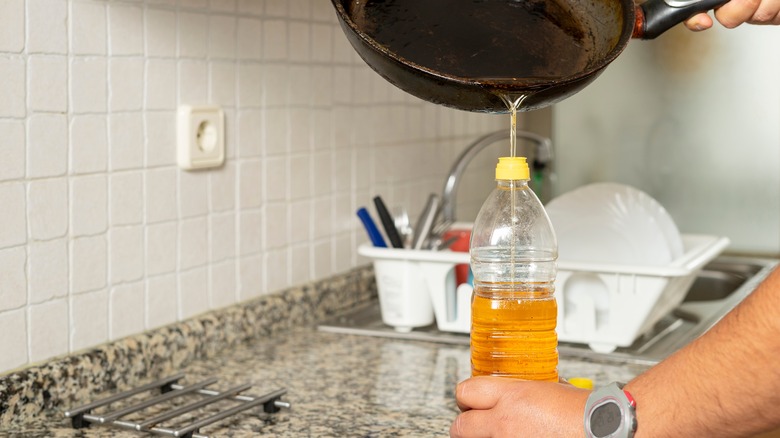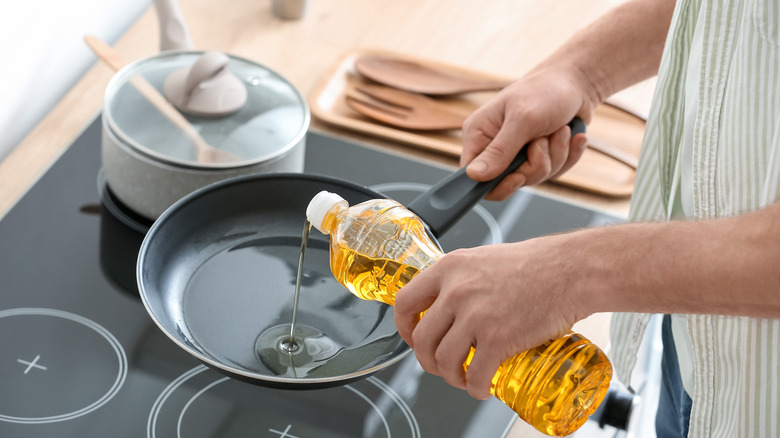Why You Should Think Twice Before Discarding Frying Oil
Many times when you read a recipe or watch cooking shows, you'll find yourself being exhorted to use only the freshest of ingredients. In some cases, fresh really is best, but not always. After all, insisting that everything be fresh and new each time you cook is in itself a recipe for food waste. What, are you supposed to throw out all of the rest of the tomato paste in the can just because you only needed a tablespoon of the stuff? (Of course you're not — portion the remainder out in tablespoon-sized blops and freeze it, instead.)
If you look, you can find all types of hacks for repurposing old wine, chicken bones, pickle juice, and even guava seeds — but are you aware that certain foods are even better in a less-than-fresh state? Older eggs, when boiled, peel more easily than new ones, which is a handy tip to know if you want to make deviled eggs. Fry grease, too, is generally better the second or third time around. Don't believe us? Frying expert Russ Parsons, author of "How to Read a French Fry and Other Stories of Intriguing Kitchen Science," breaks down the different stages of fry oil and explains why slightly used is best.
With frying oil, the third time's the charm
Per Russ Parsons, the life cycle of frying oil begins with what he calls "break-in oil," meaning oil that's fresh out of the bottle. He says this stuff is not optimal, as it still needs to be, well, broken in a bit in order to increase its ability to penetrate the surface of frying foods. Oil that's been used but is still relatively fresh works a bit better, but "optimum oil," as he calls it, is oil that has been used twice already. By the fourth go-round, however, oil starts to degrade a bit, and the fifth stage, the one he calls "runaway," involves oil that's no longer suitable for frying.
Assuming you aren't so organized as to label your used oil by how many times it's been used, how should you determine whether it's still okay to cook with? BobVila.com, which also endorses re-using frying oil, suggests the "sniff test": If the oil smells bitter or metallic or even reminds you of crayons, it's time to toss it (in a sealed plastic container, not down the sink). If the oil still smells fine, but is just a bit gunky, though, you can always use a little powdered gelatin to clean it up before re-using.

